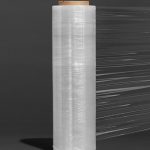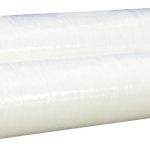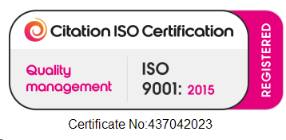Pallet wrap is a type of plastic that can be used to cover products that need to be fastened to a pallet when being transported or stored. Due to its ability to extend and then pull back in, it is distinct from conventional packaging wraps. Its resemblance to a rubber band makes it perfect for fastening goods on pallets. The likelihood of breaks and other types of product damage is decreased by a material that stretches well.
Manufacturers have a wide range of pallet wrap and wrap dispensers to pick from. If the goods must fit tightly, a more expensive film may be required; however, if just short distances must be traveled by the goods, a less expensive material will suffice.
Pallet Wrap— Recognizing The Variations
Cast and blown wrap are the two main categories for pallet wrapping. The finish of the cast pallet wrap is glossy and transparent. The ability to swiftly scan the products when they need to be identified or documented makes this quality feature acceptable for usage on products that are being transported. This enhances inventory control and the effectiveness of packing operations. Additionally, the cast wrap is hardly audible when in use. High tack in a blown wrap makes it noisier to wrap.
The fact that cast wrap has greater elasticity than blown wrap makes it better for moving objects, which is another difference between the two. The blown material, on the other hand, is more suitable for objects with odd shapes since it is robust, resilient, and has a higher cling factor. The wrap you choose for your goods will depend on your unique requirements.
Pallet Wrap: How To Pick A Specialized Film
Pallet wrap can be used in a variety of sectors to shield goods from dust, moisture, and light. The wrap can be crucial to avoid tampering or to follow health and safety laws when it comes to food or pharmaceuticals. It may be necessary for you to look for a film product with specialized properties to evaluate your needs and difficulties in storing or transporting your goods.
The Proper Pallet Wrap Application Is Crucial
The amount of tension required to wrap different loads will vary. The variations relate to the product’s need for stability and the kind of wrapping you’re employing. Incorrect application of the wrap may result in re-stretch, which will result in moving during shipping or transport. When this occurs, things are readily harmed.
Businesses can avoid improper wrap application and streamline packaging procedures by switching to the usage of wrap machines to decrease product loss and missed supply deadlines. The dangers of injury associated with manual hand pallet wrappers and holders are absent from these.
Stretch wrap machines can lower costs by improving productivity, and consistency, and removing human error. Additionally, it might allow employees to focus on other duties, which would result in a more efficient and stress-free workplace.
A Few Things You Need To Know About Pallet Wrap
Pallet wrapping is a type of plastic packaging that is used to protect palletized goods while they are being transported and stored. It is also known as stretch wrap, stretch film, and less frequently, shrink wrap. Pallet wrap is used on millions of kilometers each year all across the world, but what is it and why is it so crucial?
Microns are used to measure pallet wrap
Microns and meters are both used to measure pallet wrap. The thickness of the wrap is indicated by the micron measurement (a micron is a thousandth of a millimeter, often written as mu).
Depending on your application, the thickness, which ranges from 12 to 30 mu, is important. For large or irregular loads or weights that might be more prone to puncture and scratching during transport, for instance, you’ll want to use thicker film.

Cast and blown pallet wrap
There are two ways to make pallet wrapping. Either it is cast or it is blown, and either has advantages over the other.
Making a thick layer of resin and then blowing air into it to produce a bubble is how blown film is made. The film’s thickness (measured in microns) is determined by the size of the bubble and the original film. The substance can cool steadily thanks to the bubble, which is subsequently collected by rollers. The film is twisted into a roll when the bubble has collapsed.
The resin is cast film is flattened by being forced through cold rollers. The film’s thickness can be changed by controlling this procedure. This process is used to make the majority of pallet wrap stretch film.
Hand stretch wrap vs machine pallet wrap
There are no technical differences between machine wrap and hand wrap pallet wrap when deciding which to purchase. Instead, you purchase two different roll weights, one of which may be used to manually wrap pallets and the other of which requires a pallet wrapping machine.
Use end caps, handles, or a dispenser if you’re applying your pallet wrap by hand to lessen the stress on your hands during manual application.
Corner defense
Pallet corners frequently take the brunt of transportation. Pallet corner boards might be a preferable option even though the correct thickness of pallet wrap will assist minimize scratches and punctures.
If you’re stacking pallets two or three high, corner boards offer the extra benefit of strengthening the loads because they improve pallet stability and guard the corners against harm.
Using net pallet wrap
When wrapping produce or other things that need to breathe, net wrap is the type of pallet wrap that works best. The high-strength knitted net wrap provides the best unsteady load containment. In addition to allowing your product to air, it is robust and allows for simple loading and unloading.
Compared to wooden boxes or crates, net pallet wrap has less packaging weight, which can result in lower shipping and delivery costs.
Looking for pallet wraps? At Safe Packaging, we offer a wide range of cost-effective and professional goods packaging materials.







